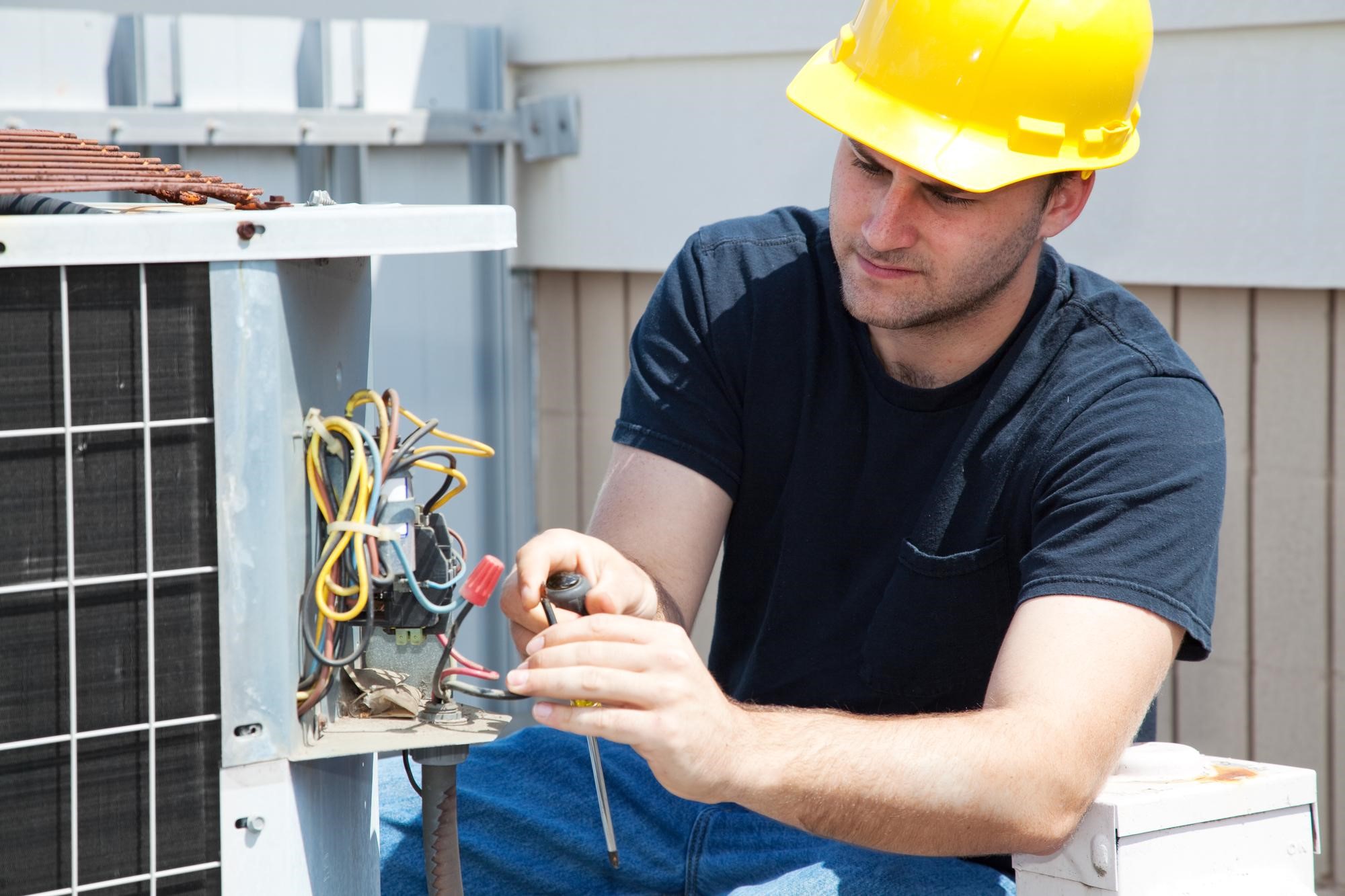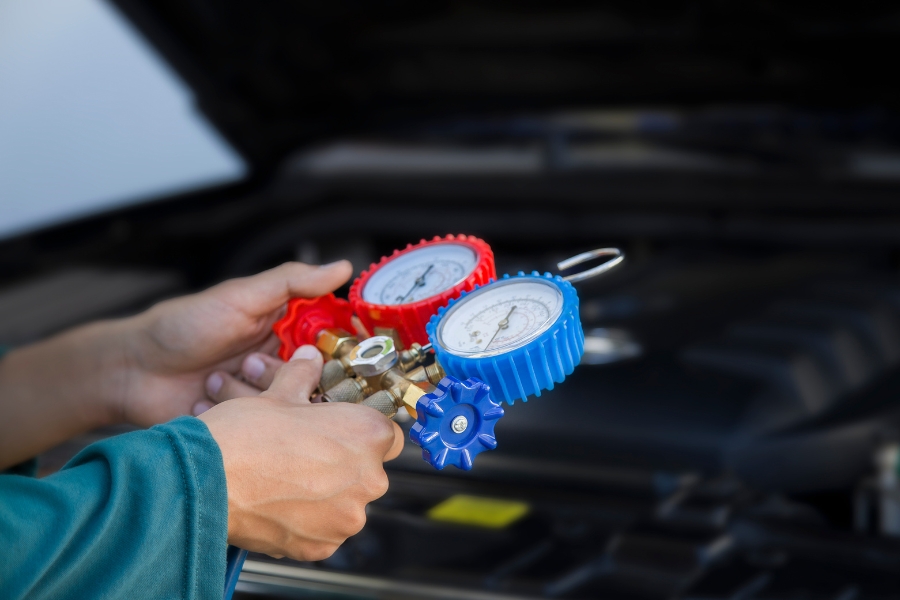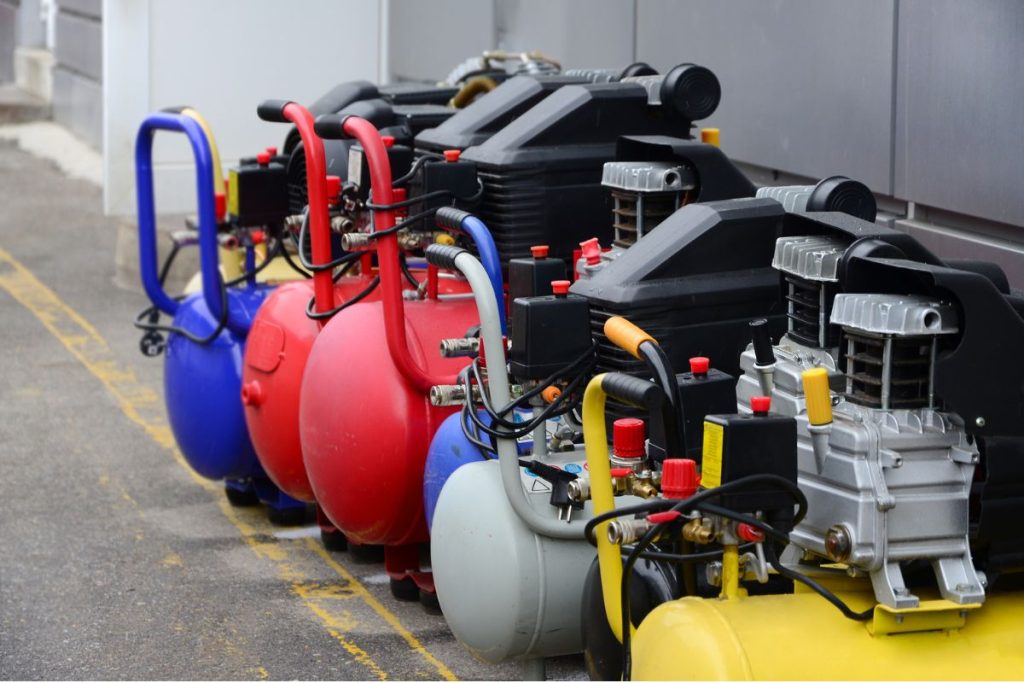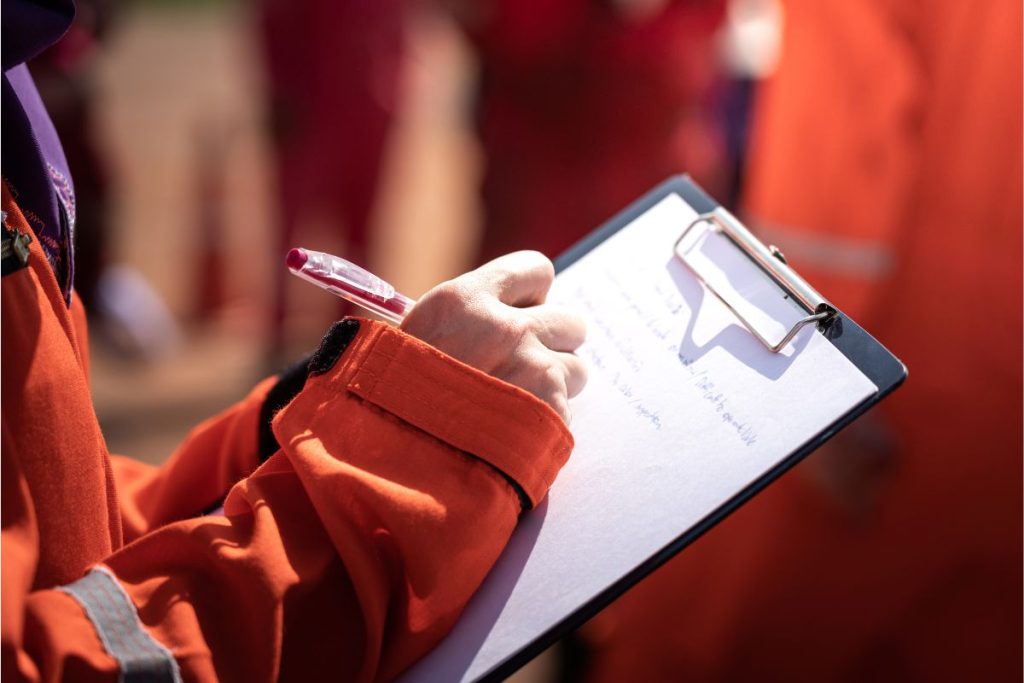Did you know that a 9.5mm diameter hole in a compressor hose can cost your business more than $15,000 annually in lost energy? Compressed air leaks are a widespread issue and can become extremely costly if not promptly detected and repaired. In this comprehensive guide, you’ll learn about the consequences of compressed air leaks, strategies for detecting them, and effective repair techniques to save energy and improve your system’s performance.
Key Takeaways
- Compressed air leaks can have costly consequences. Regular detection and repair are essential.
- This article outlines strategies for detecting compressed air leaks, including auditory inspection, soap solution method and ultrasonic detection.
- Implementing a comprehensive leak prevention program with identification, tracking, repair verification & employee involvement helps optimise system performance & reduce energy costs.
The Costly Consequence of Compressed Air Leaks
A compressed air system is one of the most expensive forms of energy, due to the cost of compressing ambient air, treating it to remove contaminants, and maintaining proper compressed air flow. Inadequate maintenance can lead to 20-30% of air capacity and power being lost to leakage. Detecting compressed air leaks is vital for system efficiency.
Fixing leaks in a well-maintained compressed air system can prevent up to 10% of compressor capacity loss. A 9.5mm diameter hole in a compressor hose, for example, can cost a business over $15,000 annually in lost energy.
Regular detection and repair of leaks are indispensable for maintaining compressed air systems, which results in energy conservation and overall cost reduction.
Strategies for Detecting Compressed Air Leaks
Detecting compressed air leaks is the first step towards addressing the issue. There are three primary methods for compressed air leak detection: auditory inspection, soap solution method, and ultrasonic detection. Each of these methods has its advantages and drawbacks, but all can help you pinpoint the location and severity of leaks in your compressed air system.
A detailed exploration of each strategy will provide insight into their workings, effectiveness, and suitable situations for their application. This will enable you to make an informed decision about the best approach for your specific compressed air system.
Auditory Inspection – Tracking Down Hissing Sounds
An auditory inspection involves using high-quality noise-attenuating headphones to detect the hissing sound of escaping air from compressed air lines at normal operating pressure. While this approach is reliable and has been widely used in plant maintenance programs to reduce energy costs and enhance equipment reliability, it has some limitations. These include:
- Ambient noise
- Restricted detection range
- Disruption from other equipment
- Subjectivity in interpretation
These factors can affect the precision of this method.
Alternative approaches, such as ultrasonic detectors or acoustic imaging cameras, offer more precise and dependable results.
Soap Solution Method – Visual Leak Confirmation
The soap solution method involves applying a mixture of soap and water to suspected areas of the compressed air system. When a leak is present, the escaping air will create bubbles in the soapy solution, indicating the location of the leak, even in cases of fluctuating system pressure. This method is widely used and highly effective in identifying compressed air leaks and can be performed using a simple mixture of 1 part inexpensive dish soap and 4 parts water.
Ultrasonic Detection – The Technological Approach
Ultrasonic detection is an advanced method that uses specialised equipment, such as SUTO ultrasonic leak detectors and SONAPHONE devices. This approach focuses on the ultrasonic elements present in the noise generated by a leak, which is characterised by its directional transmission and loudest emission at the source. Ultrasonic detectors are typically not affected by background noises in the audible range, as these signals are filtered out, allowing for leak identification even in noisy environments.
Ultrasonic leak detection offers many advantages such as:
- being versatile
- fast and easy to use
- possible to perform the tests with the equipment running
- ability to detect a range of leaks
- minimal training required
- operators typically become proficient after just 15 minutes of training
Immediate Actions to Take When You Detect a Leak
Immediate action is required upon leak detection to prevent further energy loss or equipment damage. Start by tagging the leak location and documenting it in a spreadsheet for efficient recognition and ordering of repairs. Identifying and targeting the biggest leaks is the best approach. This is supported by the Pareto Principle which states that fixing 20% of the leaks can reduce the total compressed air leakage by up to 80%.
By promptly addressing and taking action to detect leaks, you can minimise unproductive air consumption, reduce energy usage, and avert costly downtime.
Repair Techniques for Common Leak Points
Understanding common leak points and the respective repair techniques is vital for effective leak detection and repair. Two main repair strategies can be employed: tightening and sealing techniques, which involve securing connections and ensuring proper seals, and replacement of worn components, such as hoses, filters, joints, drains, fittings, and couplings.
These two strategies warrant a more detailed examination.
Tightening and Sealing Techniques
Secure and properly sealed connections are fundamental in leak prevention. Use appropriate tools, such as impact wrenches or adjustable spanners, to securely tighten internal screws and fasteners in air compressors. It is also important to follow specific tightening patterns, such as the criss-cross or star pattern, to ensure an even preload distribution and prevent uneven tightening.
Consult the manufacturer’s specifications or a factory service manual for the precise torque values for different types of screws and fasteners in your air compressor system.
Replacement of Worn Components
Another critical step in addressing compressed air leak issues and enhancing your compressed air system’s performance is the identification and replacement of faulty equipment. Begin by conducting a visual inspection of the system to identify worn components, such as old filters, lubricators, regulators, flanges, and leaking drains. Once detected, replace the leaking section of the hose or tube with a new one.
The efficiency, reliability, and cost-effectiveness of your compressed air system can be maintained by promptly repairing or replacing aged parts, including downstream secondary air receivers.
Reducing Pressure to Minimise Leakage Impact
Another strategy to minimise the impact of leaks is to reduce the overall air pressure demands of your compressed air distribution system. By lowering demand air pressure and setting the compressor pressure band as low as possible, you can help reduce leaks and their size. The benefits of falling system pressure in a compressed air system include:
- Improved system efficiency
- Decreased maintenance and unscheduled downtime
- Lower operating costs
- Energy savings
- Improved air quality
Establishing a Preventative Maintenance Schedule
Establishing a preventative maintenance schedule, inclusive of regular inspections and system audits, is key to maintaining low leakage levels and conserving energy costs. These routine evaluations and system reviews will help identify potential issues early on and allow for timely repairs, improving system performance and reducing overall costs.
The subsequent subsections delve into the significance of regular inspections and the procedure of conducting system audits for a thorough evaluation of your compressed air system.
Importance of Regular Inspections
Identifying leaks at an early stage, allowing for timely repairs and cost savings, is facilitated by regular inspections. By detecting air leaks promptly, you can prevent energy loss, equipment damage, and other related costs.
Implementing a regular maintenance plan or service schedule with your air compressor supplier is recommended to ensure your system is routinely inspected and any necessary maintenance is performed.
Conducting System Audits for Comprehensive Assessment
System audits provide a comprehensive assessment of your compressed air system, identifying areas for improvement and potential energy savings. To conduct a comprehensive site survey, follow these steps:
- Obtain a full list of all equipment that is part of the system.
- Evaluate the system for leaks and pressure drops by listening for hissing sounds and applying a soap solution to detect any visible signs of leakage.
- Inspect and clean air filters by checking for blockages or debris and replacing or cleaning the filters accordingly.
Detecting and eliminating artificial demand, assessing the potential benefits of installing a pressure regulator, and evaluating the overall system performance and efficiency by measuring pressure levels, flow rates, and energy consumption are other critical steps in conducting a comprehensive system audit. Document your findings and recommendations from the audit to create a plan for future maintenance and repairs, ensuring your compressed air system continues to operate efficiently and cost-effectively under normal system pressure.
Implementing a Leak Prevention Program
A robust leak prevention program can enhance your compressed air system’s performance and curtail energy costs. This program should incorporate:
- Identification
- Tracking
- Repair
- Verification
- Employee involvement
By promoting participation in proactive leak detection efforts, training in leak identification and reporting, engaging in the repair and verification process, and fostering an awareness and sense of responsibility for leak prevention, employee involvement can greatly bolster your leak prevention program.
Summary
In conclusion, detecting and repairing compressed air leaks is crucial for maintaining an efficient and cost-effective compressed air system. By implementing a leak prevention program that includes detection strategies, repair techniques, pressure reduction, preventative maintenance, and employee involvement, you can minimise the impact of leaks and save energy costs. Remember, a small investment in detecting and repairing leaks today can lead to significant savings and improved system performance in the long run.





